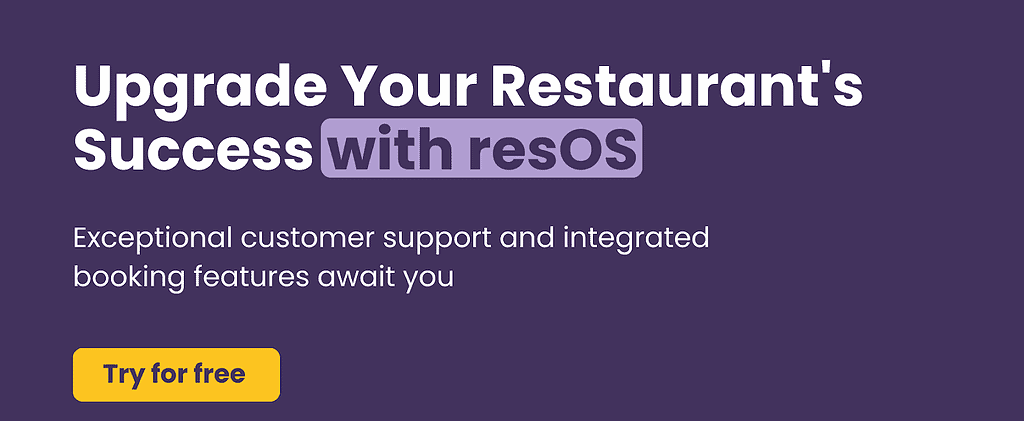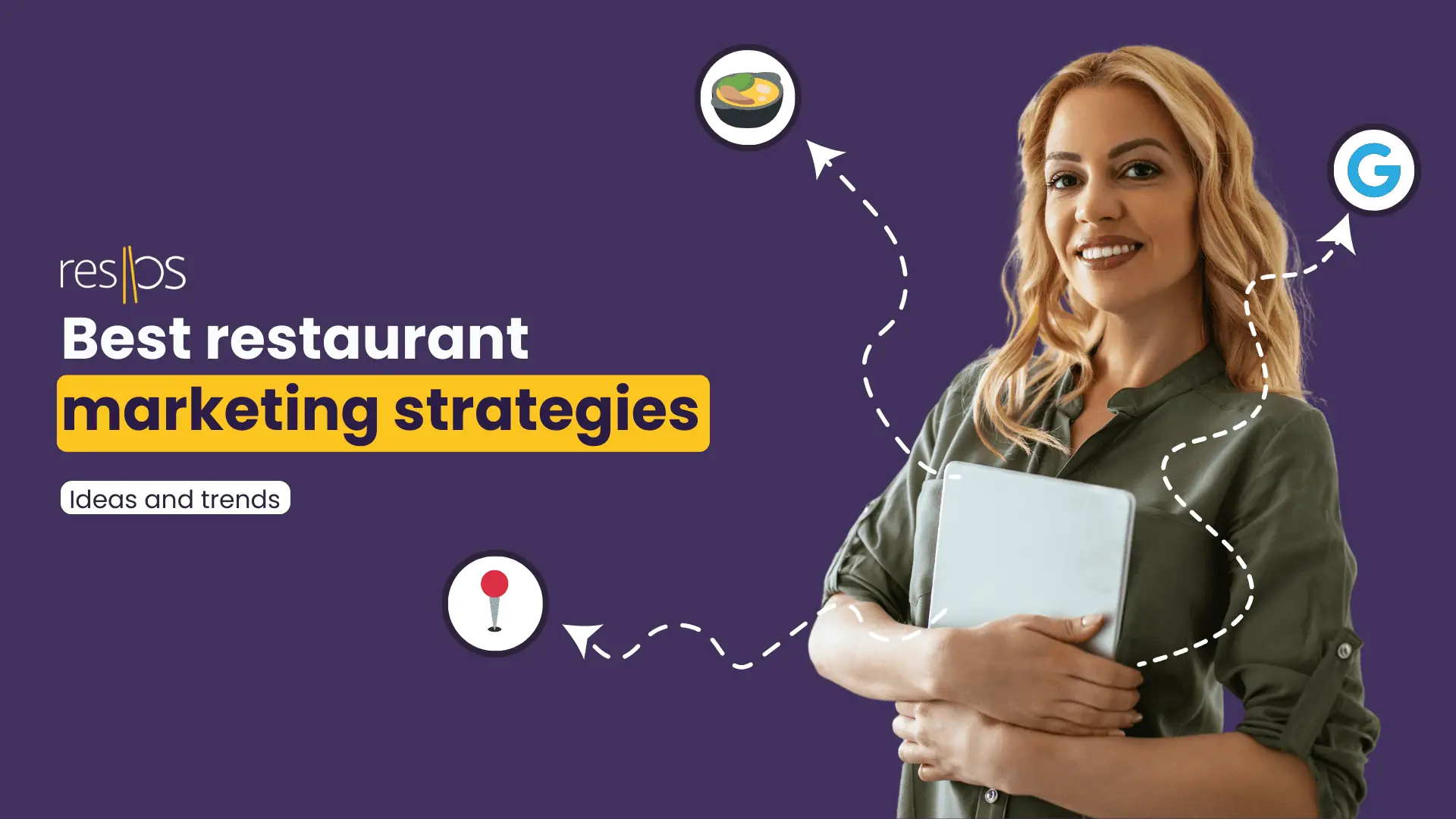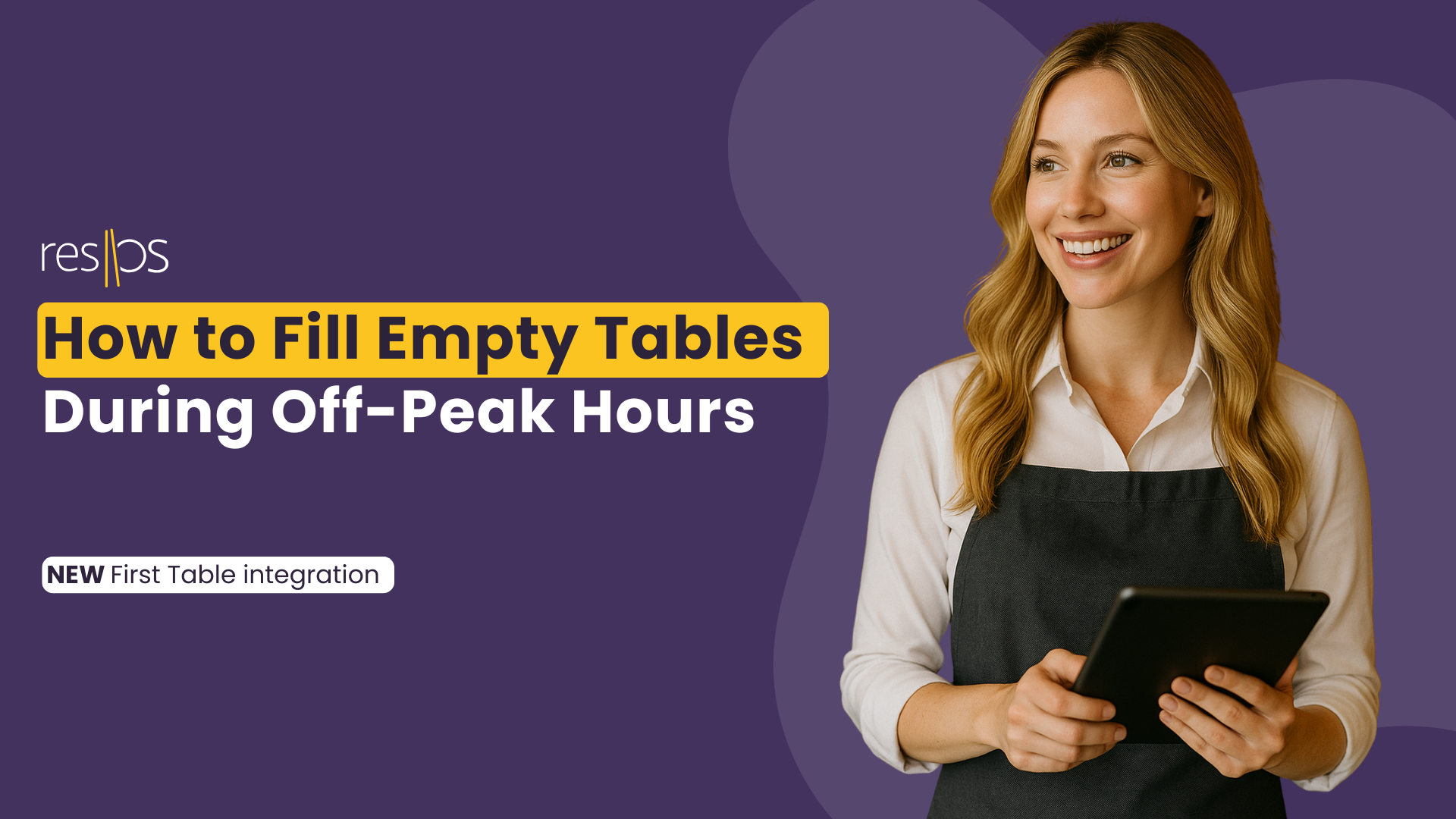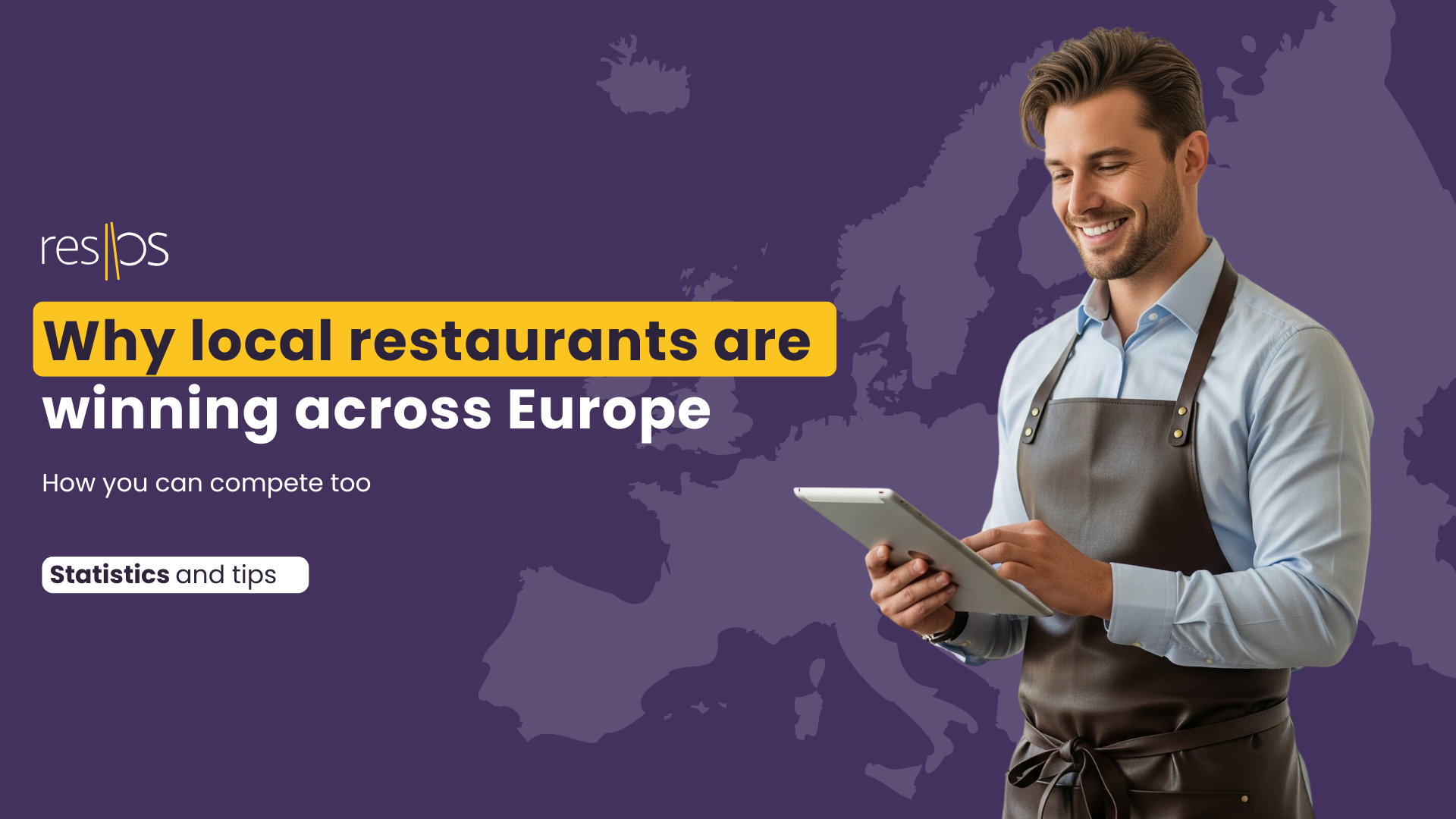In the bustling world of hospitality, staying ahead of marketing trends and strategies is crucial for restaurant owners looking to soar. The right marketing strategy can significantly boost a restaurant’s visibility, attract more customers, and ultimately, elevate profitability. This article dives into effective restaurant marketing strategies, addressing essential questions and offering actionable insights for restaurateurs aiming to level up their business in a competitive market.
🗝️ Highlighths:
1. Restaurant Marketing Mix
2. Selecting perfect strategy
3. Restuarant marketing channels
4. Current Marketing Trends
📊 Marketing Mix — 4Ps and 7Ps
The 4 P’s of a restaurant marketing strategy
The cornerstone of any robust marketing strategy in the restaurant industry lies in the 4 P’s: Product, Price, Place, and Promotion. These elements are the secret ingredients to crafting compelling offers that resonate with your target market’s taste buds and preferences.

🍲 Product:
This refers to the heart of your offering, including the quality and variety of your dishes, the design of your menu, and any unique features of your restaurant that make you stand out from the crowd.
Example: A farm-to-table restaurant that sources all ingredients locally, offering seasonal dishes. This approach emphasizes freshness, quality, and support for local farmers, making the restaurant stand out. Unique features might include a chef’s table experience or cooking classes, adding value and distinctiveness.
💰 Price:
Your pricing strategies should mirror the value of the experience you offer, while also staying competitive within your segment.
Example: Adopting dynamic pricing for various times can align with experience value and attract more customers.For instance, offering lunch specials on weekdays or early bird discounts to stay competitive and increase footfall during slower periods.
📍 Place:
This encompasses your restaurant’s physical location, its ambiance, and how you serve up your culinary delights (e.g., dine-in, takeout, delivery).
Example: Selecting a prime location, like a city center or scenic spot, improves dining experiences. Tailor ambiance for coziness or energy to match your audience. Provide dine-in, takeout, and delivery to meet diverse customer preferences.
📣 Promotion:
The cherry on top, promotional activities are vital for attracting and keeping customers. This includes advertising, PR, social media buzz, and any mouth-watering offers or events.
Example: Utilizing social media platforms to create buzz around new menu launches, seasonal specials, or events. Engaging with customers through behind-the-scenes content, chef interviews, and cooking tips can build a community. Implementing referral programs, discounts for first-time customers, and hosting themed dining events are effective ways to attract and retain customers.
Marketing mix explained based on McDonald’s restaurant, check video below. 👇
Marketing Mix 4Ps | McDonald’s Examples
7 P’s — for better service
Expanding the traditional 4 P’s of marketing to a more comprehensive 7 P’s strategy offers restaurant owners a deeper insight into crafting a successful marketing plan that resonates well with their target audience. Alongside Product, Price, Place, and Promotion, introducing People, Process, and Physical Evidence into your strategy can significantly enhance customer experience and satisfaction.
Here’s how these additional P’s integrate into the restaurant marketing mix:
🧑🍳 People
People are at the heart of your restaurant’s success, encompassing not just your customers, but also your staff. The quality of customer service and the dining experience your team provides can make or break your restaurant’s reputation. Training your staff to offer exceptional service ensures that customers feel welcomed, valued, and eager to return.
Example: Empowering your staff to handle minor customer complaints on the spot can lead to immediate problem resolution and a positive dining experience.
🔁 Process
The process involves the operational aspects of your restaurant, including the efficiency of service delivery, order taking, and payment processing. A streamlined process reduces wait times, errors, and enhances the overall customer experience. Implementing technology, like an online reservation system or a mobile ordering app, can streamline operations and improve satisfaction.
Example: A quick-service restaurant could implement a mobile ordering app that allows customers to order and pay ahead, reducing wait times and improving the flow of service during peak hours. You can also consider online booking table reservation, such as resOS, to maximize your efficiency and save your time.
🌟 Physical evidence
Physical evidence refers to the tangible aspects that customers associate with your restaurant. This includes the cleanliness of your establishment, the presentation of your dishes, and the ambiance of your dining area. Every touchpoint should reflect the quality and ethos of your restaurant, contributing to the overall brand experience.
Example: A fine-dining restaurant might focus on elegant table settings, high-quality dinnerware, and ambient lighting to create an exclusive dining atmosphere that matches its brand identity.
Selecting the best strategy for your restaurant
Choosing the best strategy for your restaurant requires a deep dive into your target audience and your place in the market. Personalization and an unforgettable customer experience are now more important than ever. Consider these strategies:
📱Leverage Social Media
Social media platforms like Instagram, Facebook, and Twitter offer unparalleled opportunities to connect with your customer base. By posting vibrant images of your dishes, you can literally make mouths water.
👉 Read more about restaurant social media marketing here
Live videos of your kitchen in action or behind-the-scenes glimpses can create a buzz and foster a sense of community. Interactive content, such as polls about new menu items or Q&A sessions, can keep your audience engaged and feeling valued.
💡 Example: A restaurant can highlight its seasonal menu on Instagram with captivating images and stories behind each dish. Hosting weekly live sessions where the chef shares cooking tips can also engage followers and give them an insider’s view.
🌐Optimize for Local SEO
Local SEO helps your restaurant appear in search results when potential customers are looking for places to eat in your area. A well-maintained Google My Business (GMB) listing is crucial. Ensure your listing includes accurate information about your location, hours, and menu.
Regularly updating your GMB with new photos, events, and offers can improve your visibility. Encouraging satisfied customers to leave positive reviews can also boost your rankings and attract more diners.
💡 Example: If a restaurant regularly updates its GMB listing with photos of daily specials, updates its hours for holiday seasons, and responds promptly to all reviews (both positive and negative), it’s more likely to stand out in local searches. Featuring a link to the menu or reservation system can also drive direct actions from potential customers.
Would you like to know more about SEO and how to optimize your restaurant on Google? 👇Check video below 👇
3 Best Restaurant Marketing Strategies For 2023
💖 Implement Loyalty programs
Loyalty programs reward repeat customers, encouraging them to keep coming back. This could be through discounts, special offers, or a points-based system where customers earn points for every purchase that can be redeemed for free meals or discounts. Digital loyalty programs can also offer insights into customer preferences, allowing for more personalized marketing efforts.
💡Example: A café might offer a digital loyalty card, where after purchasing nine coffees, the tenth is free. They could also send out birthday discount vouchers to members or offer double points on slow days to boost business.
🎉Host events and workshops
Events and workshops offer unique experiences that can attract new customers and delight regulars. Cooking classes, wine tastings, or themed dinner nights provide an opportunity for customers to engage with your restaurant on a deeper level. These events can also generate buzz on social media and in local press, drawing in those looking for what’s new and exciting in the dining scene.
💡 Example: A restaurant specializing in Italian cuisine might host a monthly pasta-making workshop, where participants learn to make pasta from scratch and then enjoy a dinner featuring the pasta they made.
👉 Read more about restaurant event management here
📢Marketing channels for restaurants
Social Media Marketing
Social media platforms like Instagram, Facebook, and Twitter are invaluable for restaurants looking to engage directly with their customer base. By showcasing your menu through eye-catching photos and videos, you can entice food lovers and create a buzz around your culinary creations.
Engaging with your audience through comments, shares, and likes builds a community around your brand. Running targeted ads can also help reach potential customers in your local area or with specific interests aligned with your restaurant’s offerings.
💡 Example: A restaurant might use Instagram to post daily specials with vibrant photos and use Instagram Stories to give a behind-the-scenes look at the kitchen’s prep work, creating anticipation and drawing customers in.

Restuarant Email Marketing
Email marketing allows for direct communication with your customers by sending them personalized promotions, updates about your restaurant, and newsletters that include mouth-watering recipes or upcoming event information.
Segmenting your email list based on customer preferences and dining history can help tailor the content to different audience segments, making your messages more relevant and engaging.
💡 Example: A monthly newsletter that includes a special coupon for subscribers’ birthdays, a feature on seasonal menu items, and news about upcoming events at the restaurant.
Restaurant Content Marketing
Creating valuable content like blog posts, videos, and infographics can attract and engage a wider audience. This content can range from recipes, cooking tips from your chefs, to stories behind your dishes or sustainable practices your restaurant follows.
Sharing this content on your website and across social media platforms not only enhances your brand’s authority in the culinary world but also improves your search engine rankings, driving more organic traffic to your site.
💡 Example: A series of blog posts on your website about the origins of your signature dishes, including interviews with the chefs and local suppliers, paired with high-quality video tutorials on making some of your menu favorites at home.
Influencer partnerships
Collaborating with food bloggers, critics, and social media influencers can introduce your restaurant to their followers, expanding your reach. Choose influencers whose audience aligns with your target market and who share values similar to your brand.
An influencer visiting your restaurant and sharing their genuine experience can be more persuasive than traditional advertising, as it comes across as a trusted recommendation.
💡 Example: Inviting a well-known food blogger to a tasting event at your restaurant where they can sample your newest menu items. Their posts and stories about the experience can attract their followers to visit your restaurant.
Examples and trends
Technology Integration
Integrating advanced booking systems into restaurant operations significantly enhances the dining experience and streamlines management tasks. These systems enable efficient table management, accommodate special requests, and offer a platform for personalized customer service. The adoption of online booking caters to the preferences of digital-savvy consumers, providing a seamless bridge between online engagement and the physical dining experience.

🔗Trend reference: EHL’s study shows significant benefits of using advanced booking systems in restaurants, including better customer service and efficiency. It stresses the need for adopting digital solutions to align with modern consumer expectations and ensure a seamless online to in-person dining transition.
Instagrammable moments
Creating visually appealing spots within your restaurant encourages guests to take photos and share their experiences on social media, effectively providing free word-of-mouth advertising. From unique décor and presentation of dishes to interactive installations, these elements can make your establishment more share-worthy and attractive to the Instagram crowd.
🔗Trend reference: According to marketing agency called facelift, posts tagged with locations garner 79% more engagement, underscoring the importance of creating a space worth sharing.
Sustainability and Health Trends
The shift towards sustainability and health-conscious dining continues to grow. Restaurants that highlight their use of local, organic ingredients or offer a range of options catering to dietary restrictions (such as vegan, gluten-free, etc.) can tap into this market.
Communicating your restaurant’s commitment to sustainability, whether through waste reduction practices or sourcing ingredients ethically, resonates with a broad audience looking for guilt-free dining options.
🔗Trend reference: A report by published Frontiers found out that people are willing to spend more on a product if it comes from a sustainable or socially conscious brand.
Conclusion
In navigating the competitive restaurant landscape, the key takeaway is the importance of tailoring innovative marketing strategies to fit your unique context. There’s no one-size-fits-all solution; success hinges on aligning tactics with your restaurant’s concept, target audience, and budget.
Whether it’s leveraging Instagrammable moments, focusing on sustainability, or integrating cutting-edge technology, each strategy should be carefully customized to amplify your brand’s identity and resonate with your patrons. Remember, in the dynamic world of dining, adaptability and personalization are your best ingredients for creating meaningful connections and achieving long-term growth.



